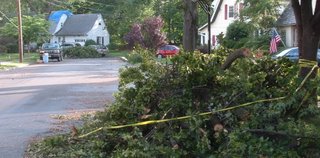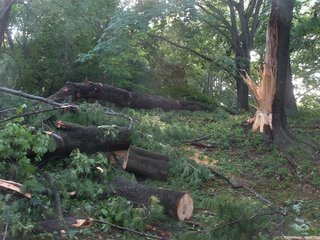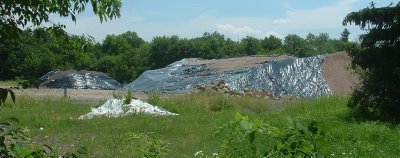
from Michael Stetz
San Diego Union Tribune:
They are poets – poets of properties to be sold. Through their eyes, so many things – bathroom tiles, for instance – become “exquisite,” “enchanting,” “beguiling.”
They paint pictures: “As you enter through the gate, up the gentle meandering drive, you know you have reached a special place. . . . ”
Or: “Picture yourself at the center of downtown excitement. Catching afternoon rayson a sun deck high above the trees. Watching the sun set over the bay . . . .”
Man. Real estate people. They're hogging the thesaurus.
Not long ago, selling homes in San Diego was easy. The market was so hot that all you had to do was write something like this: “House. In San Diego. With, um, some windows.”
And you'd get 47 offers in nine minutes.
Now, though, with more houses being offered for sale and competition for buyers heating up, real estate agents seem to be on the prowl for any lilting adjective they can find. And little wonder.
It now takes 62 days to sell a house. In June 2004, it took 22 days.
Check out a recent edition of the glossy magazine Dream Homes San Diego. It's loaded with delicious digs and dressed-up sentences: “Right in the heart of our dynamic city, but radiating tranquillity and serenity, this expansive estate is located in a lush canyon with views of downtown and the bay.”
And it's only $2.2 million, by the way.
Real estate agents have a history of doing remarkable things with the English language, of course.
When they write “cozy,” they mean really, really, really, really, really tiny.
Views? They are sweeping. Or breathtaking. Or stunning. They are never, “Just kind of so-so.” Entrances? They soar. Or they're warm and welcoming. Never will an entrance be just a door.
Who writes this stuff?
Portia Smith, for one.
“I probably spend more time on them than I should,” said Smith, who has been in the real estate business only a few years and writes her clients' blurbs herself. “I laugh at myself. I can spend a half a day on them.”
Smith is good.
“Wake up to the 'Palace Amongst the Clouds!'” she wrote in Dream Homes San Diego, about a condominium in downtown San Diego. Check that. It's not simply a condominium, as Smith makes clear in the ad. It's also an “Urban Antique Penthouse.”
Smith thinks it's important to try to capture the feel of a home through words.
“I try to be original,” she said. “I try to make it sound exciting.”
Being bold and rich with description can be important, particularly now in the cooling housing market, said Charles Jolly, president of the San Diego Association of Realtors, who has 30 years in the business.
Take that line about the “gentle meandering drive.” If the ad merely said something bland, such as “long driveway,” it probably wouldn't spark the same interest, Jolly said.
The goal of all this gab is to grab a buyer's interest, Jolly said.
Check this out, about a condominium in Mission Beach, described on the Dream Homes Web site:
“See the ocean, breathe the ocean, live the ocean. . . . ” (If you breathe the ocean, won't you actually drown?)
If that doesn't knock your socks off, it's described this way, too: “From the moment you pass through the artful stainless steel doors, you will want to live at South Beach, San Diego Style.”
Hmmm. Sounds good.
So you decide to check this place out personally.
You stand out front, with the Pacific crashing right before you.
The sun is up.
The wind is warm and soft.
And . . . Oh no. The hyperbole is contagious. The only word that comes leaping to mind – “enchanting.”
 It's those Weird NJ guys making news again. Bloomfield vagabond journalist-editors Mark Sceurman and Mark Moran have both gone big time with a book of "Weird US" stories, and have expanded their franchise to other states, including Florida, Illinois, Wisconsin, Pennsylvania, California and New England, and a TV series on the History Channel.
It's those Weird NJ guys making news again. Bloomfield vagabond journalist-editors Mark Sceurman and Mark Moran have both gone big time with a book of "Weird US" stories, and have expanded their franchise to other states, including Florida, Illinois, Wisconsin, Pennsylvania, California and New England, and a TV series on the History Channel.






















